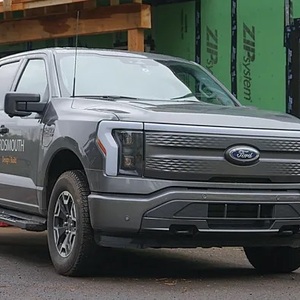ok this has to be such a stupid question because i can’t even search the internet for it and find out.even kindergarters must know….. today i had to replace the 24v transformer on a furnace,go to the supply house flop it down and they all get this funny look,you know the look ” oh i know i’m screwed now” . anyway it’s a 50 va instead of a 40 va thats common.i went 2 different places with no luck. so i’m trying to figure out whats the difference. i’ve never really paid attention before just always got the replacement and went on. so what does va mean on transformers? thanks larry
hand me the chainsaw, i need to trim the casing just a hair.


















Replies
Volt Amps
Roughly equivalent to Watts. I wouldn't hesitate to install the 40 VA model, if that's what it takes to heat the house. It would probably be OK as a permanent replacement, and will certainly work long enough to give you time to track down the original.
so that means that one puts out 40 watts ,the other is 50 watts? i'm not in a big hurt for heat,no one is living there at the moment so i came home thinking i would hit the internet and see whats out there.the bite to this is it's a new unit and the manf. when called just shrugged off the problem.they have another company handle their warranty claims. i think it's called " pass the buck inc!" thanks larryhand me the chainsaw, i need to trim the casing just a hair.
not exactly 40 and 50 watts. but for little trannys on furnaces you can just use the VA ratingVA is a design calculation whereas watts has to be measured,
for your application that would be Volts X Amps = Watts...
the difference between them is Eff. as a %..the VA rating includes the power ..(Watts) ..needed to run the transformer itself plus any load....the EE's here will probably give this a thorough going over and soon.
.
.
., wer ist jetzt der Idiot ?
The difference is not efficency, but power factor.When you have a load that is inductive (motors or solenoids) the curent will lag the voltage.When you have a capacitive load the it will lead. Typically the only place that you have capacitive load is industrail or commercial application where the either add capacitors to correct the power factor or use special synchronous motors that can be run in a capacitive mode.On the current that is directly in phase with the voltage does any useful work. And that is all that the power company charges you for.You could have the 120 connect to a "pure capacitor" and any ampmeter where showing 10 amps for example, but the watt hr meter would not be moving at all.But the power company still have have the generators runing and need to pay for the power losses when that 10 amps flows through the resistance in the lines.So, for big users power factor is one the item, in addtion to the actual power used, for which there are surcharges.Now I will use the 40 va transformer as an example as the numbers work out.That means that the transform can deliver 1 2/3 amps at 24 volts. Now if it was used for lights, lights are a purely resistive load. So the transformer would be labeled 40 watts.For the furnace you might be running a solenoid for a gas valve or motors for pumps on a boiler.40 VA means that it can deliver 1 2/3 amps at 24 volts. A amp meter might show the valve drawing 1 2/3 amps. But the valve is only use part of it to do work. So it might only be drawing 30 watts. But you still need a big enough transformer to supply the 1 2/3 amps, thus you need a 40 VA transformer..
.
A-holes. Hey every group has to have one. And I have been elected to be the one. I should make that my tagline.
Pretty pictures for Bill.
View Image
The top curve is voltage over time and the lower is current over time.
Notice that when the voltage is peaked at 24 V, the current is still at less than the max of 1.66 amps, then after the voltage has started to fall, the current finally gets up to 1.66.
At no one point in time can you get a voltage and current that multiply up to 40 watts, but your V meter says 24 and your A meter says 1.66, ergo 40 VA.SamT
Anyone who doesn't take truth seriously in small matters cannot be trusted in large ones either. [Einstein] Tks, BossHogg.
I was always under the delusion that no transformer was capable of delivering the stated VA...but it's early ...:) it will make sense after some joe.
.
.
., wer ist jetzt der Idiot ?
It should be able to deliver rated VA. But it is a heat thing. And the more heat the shorting life. But it should have "reasonable" life at rated current..
.
A-holes. Hey every group has to have one. And I have been elected to be the one. I should make that my tagline.
....I wrote efficiency....yikes!!oboy.
.
.
., wer ist jetzt der Idiot ?
>> so that means that one puts out 40 watts, the other is 50 watts?Close, but not quite. They'll both put out however much power the load draws. What the rating tells you is how much power they can put out continuously, at a specified ambient temperature, without overheating.If the load is 50 VA and you install the 40 VA transformer, it will supply 50 VA, but it will heat up. If the ambient temperature is close to the design limit, it may heat up enough to reduce its life expectancy.
"If the load is 50 VA and you install the 40 VA transformer, it will supply 50 VA, but it will heat up. If the ambient temperature is close to the design limit, it may heat up enough to reduce its life expectancy."As with the 50 VA load the output voltge will be low. In some cases too low to do the job.
.
.
A-holes. Hey every group has to have one. And I have been elected to be the one. I should make that my tagline.
some light reading
if you have a month to kill......
http://www.ibiblio.org/kuphaldt/electricCircuits/AC/AC_9.html#xtocid214300
.
.
.
, wer ist jetzt der Idiot ?
A VA is 1Volt at 1AMP So if you have 1v at 1a it is 1 watt.(at what ever voltage the output of the transformer is)...If you need 40 VA at 24v and the transformer is 9999999VAat 24v, the output voltage is the same ,you are ok. It just has the ability to provide more than you need. The voltage is the same, so who cares??? don't sweat it.
You just can't use a smaller va rating than you need, but you can use more...You need 550hp to drive 30 mph??
Bud